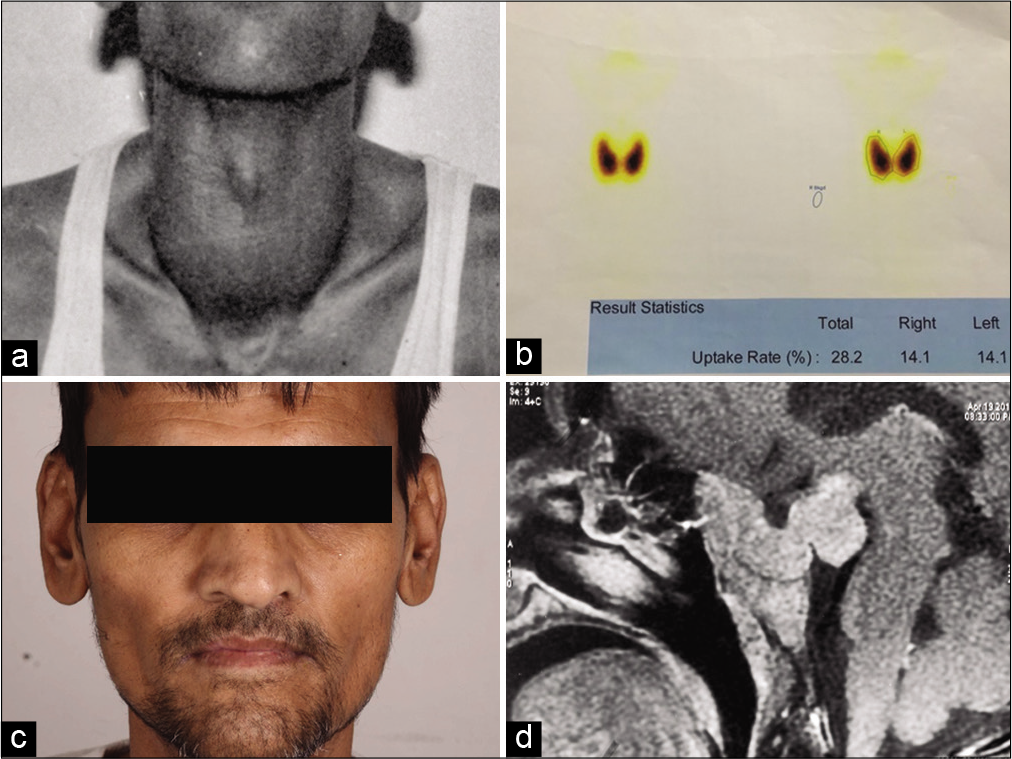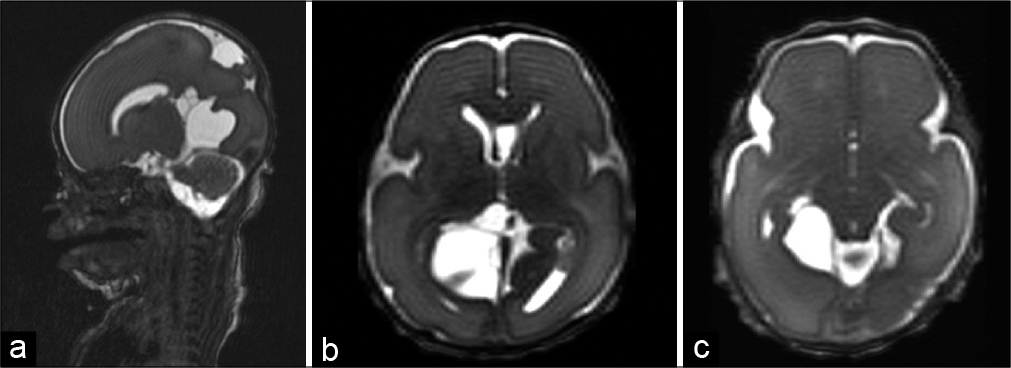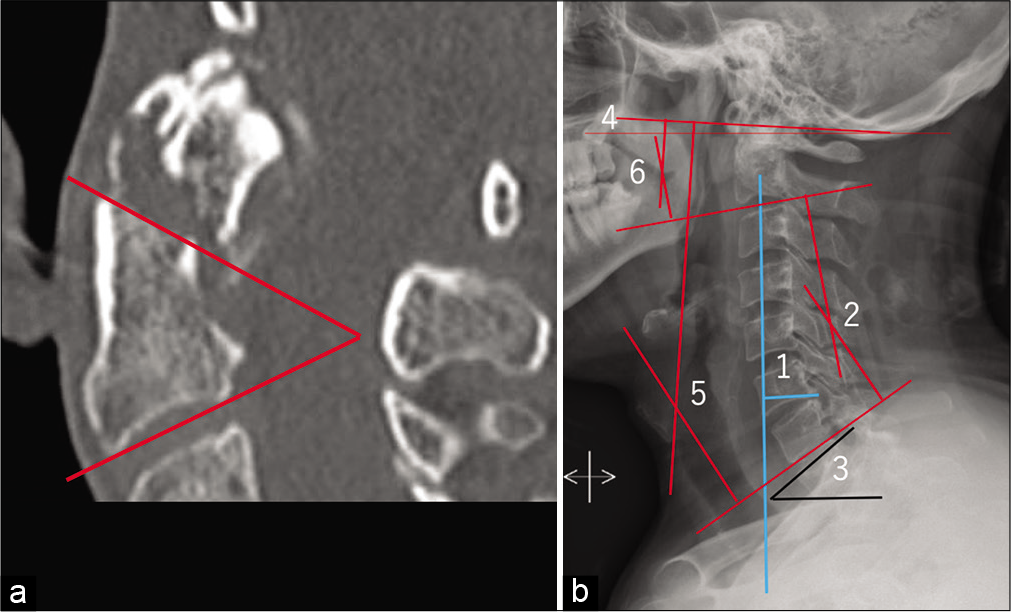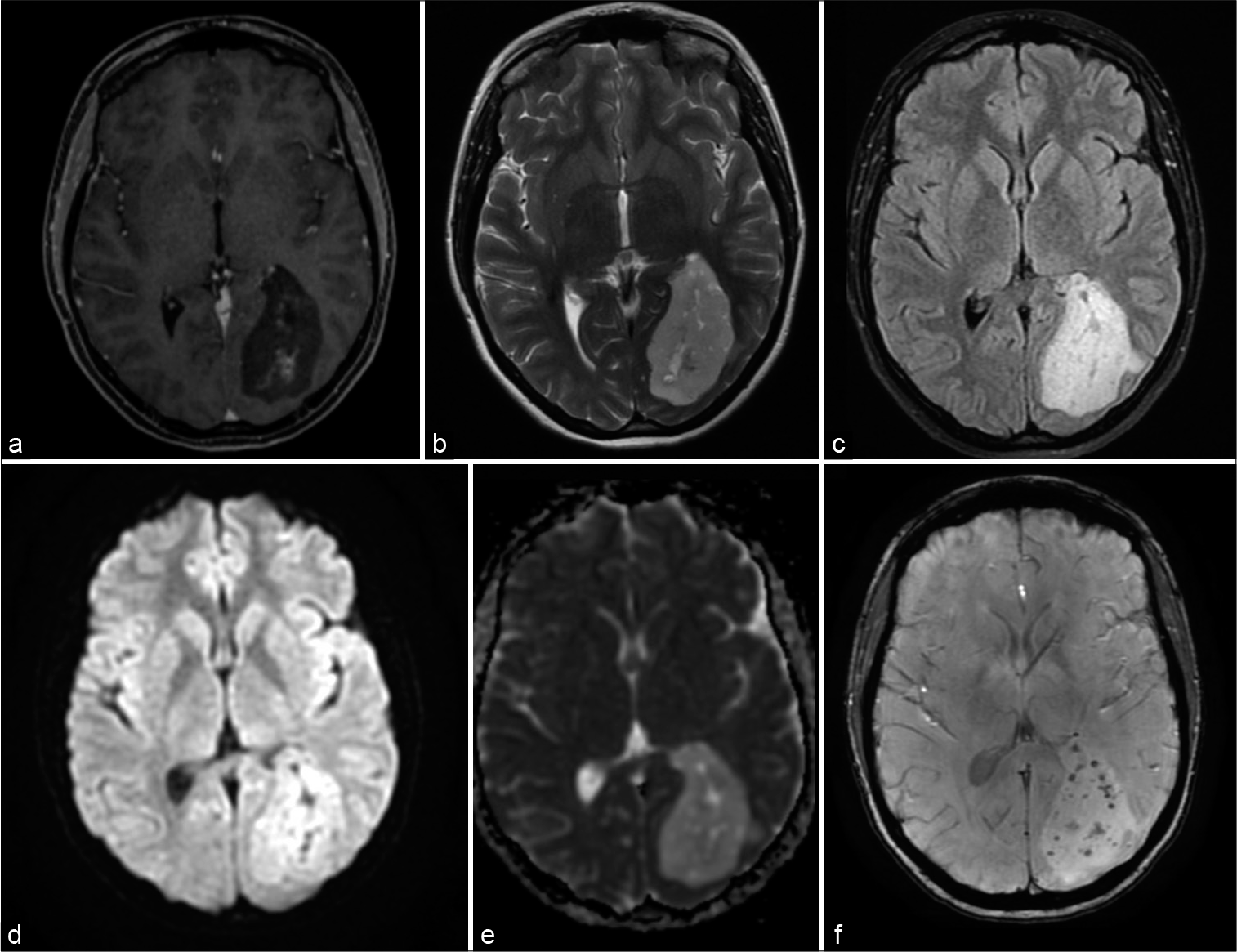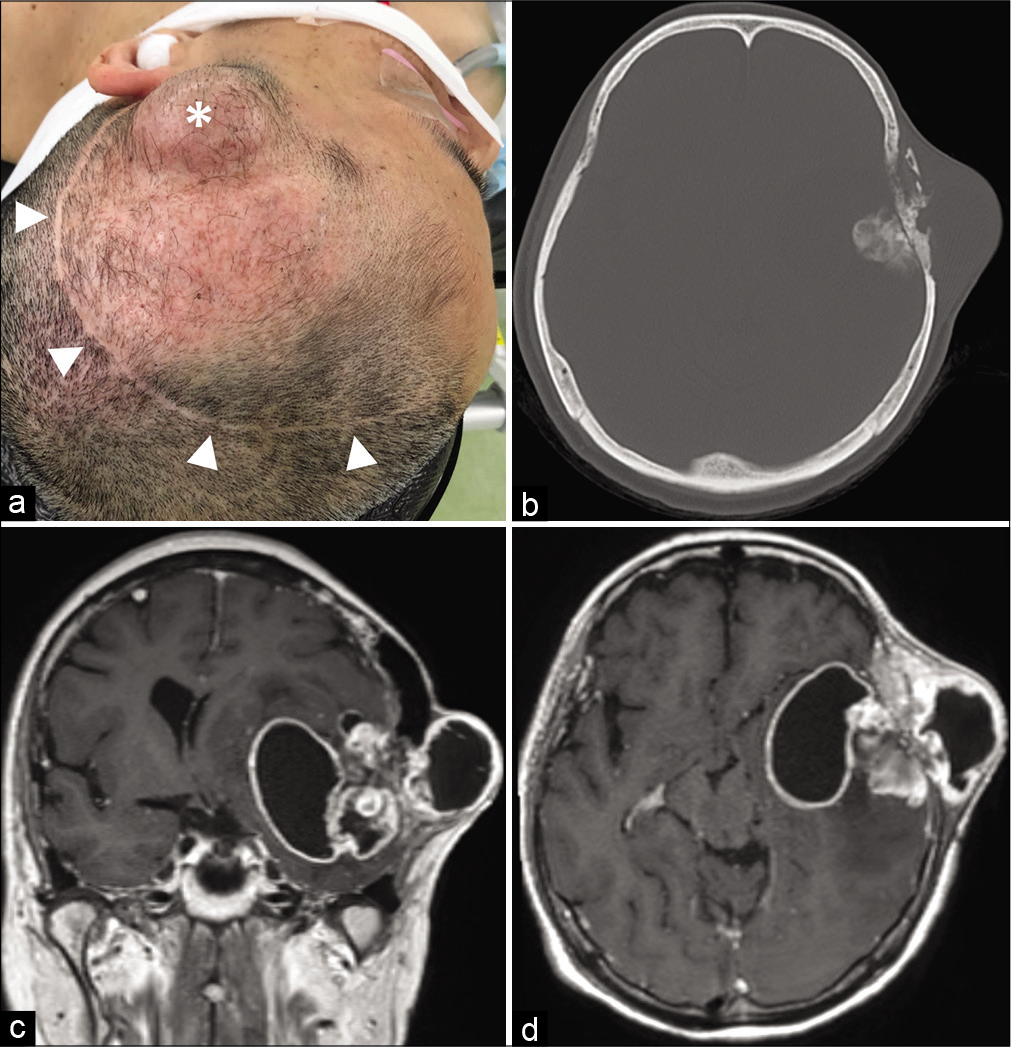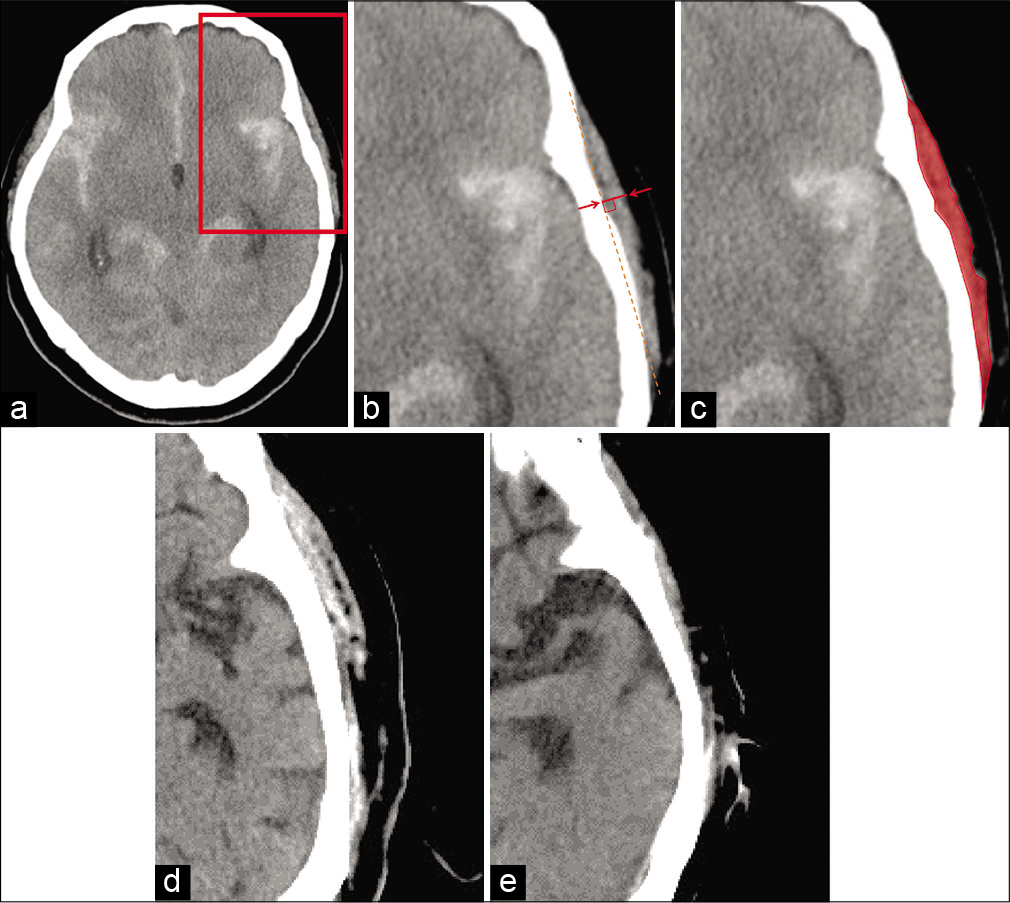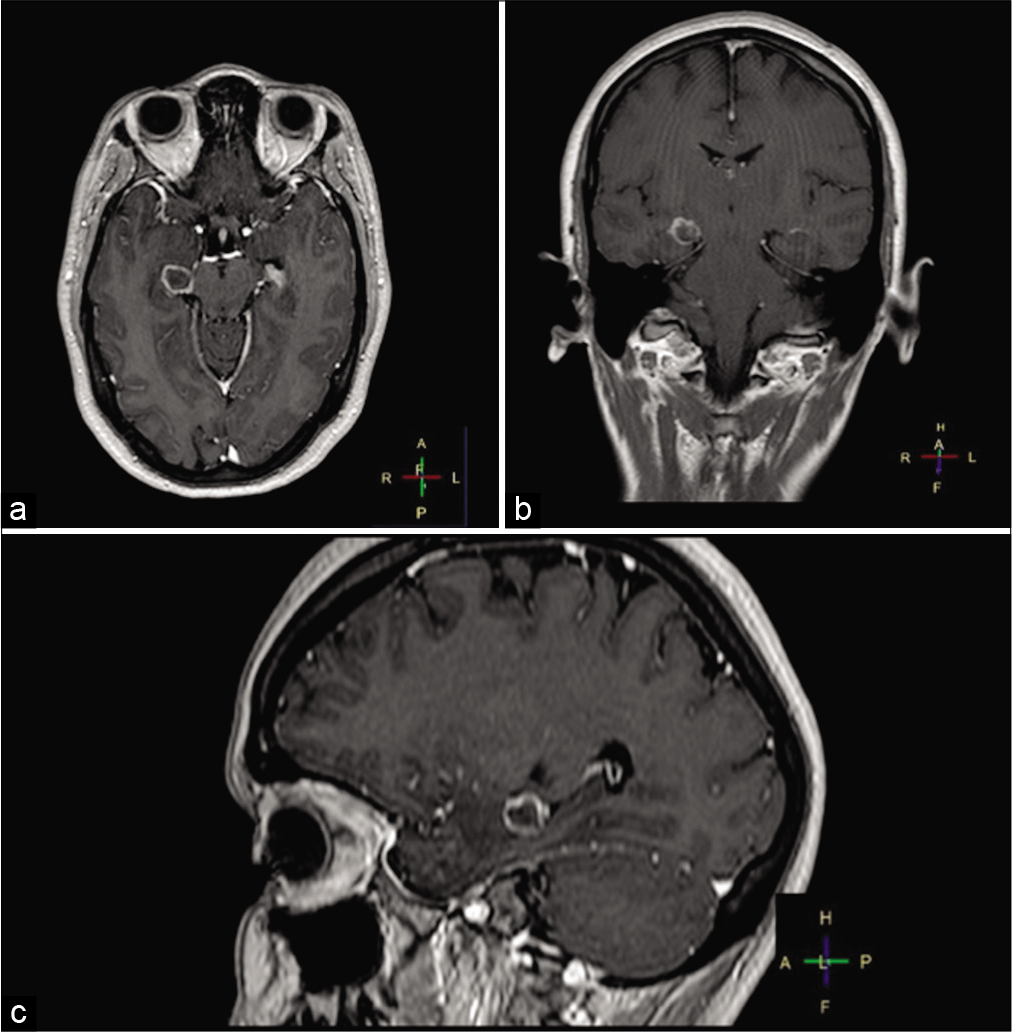The outcome of TSHoma from a tertiary care institute in India
Date of publication: 14-Apr-2021
Background: Thyroid-stimulating hormone (TSH)-secreting pituitary adenoma (TSHoma) is the rarest functioning pituitary adenoma.
Intracranial arachnoid cysts in an infant: A technical note on the innovative use of navigation and flexible endoscopy for cyst fenestration
Date of publication: 14-Apr-2021
Background: Intracranial arachnoid cysts (ACs) are a cerebral spinal fluid (CSF) collection within the meninges. They typically arise during embryologic development. Some are stable overtime with little consequence, but large or growing cysts may require surgical intervention. The optimal surgical technique is debated and may be more technically challenging in the infant age group.
Strategy to reduce radiation exposure in postoperative spinal computed tomography scans
Date of publication: 14-Apr-2021
Background: When diagnosing and treating spinal disorders, spine surgeons commonly utilize computed tomography (CT) scans preoperatively, intraoperatively, and postoperatively.
Impact of the novel coronavirus disease (COVID-19) outbreak on the neurosurgery department in Chad
Date of publication: 14-Apr-2021
Relationship between odontoid fracture angle and cervical sagittal balance
Date of publication: 14-Apr-2021
Background: Fractures can occur in various locations within the odontoid process with differing orientations. However, little is known about what factors contribute to the anterior versus posterior angles/orientation of these fractures.
Commentary on Post, et al. Ultra-early tranexamic acid after subarachnoid hemorrhage: A randomized controlled trial. Lancet 2021
Date of publication: 14-Apr-2021
Background: Tranexamic acid (TA) administration in aneurysmal subarachnoid hemorrhage (SAH) within the first 24 hours may reduce the incidence of early aneurysmal rebleeding. However, this is also the potential for an increased risk of delayed cerebral ischemia if TA is administered for more than 72 hours following the initial aneurysmal rupture.
Intraparenchymal subependymoma: Case report and literature review
Date of publication: 14-Apr-2021
Background: Intracranial subependymomas are rare slow-growing benign tumors typically located in the ventricular system, accounting for 0.07–0.7% of all intracranial neoplasms. Intraparenchymal subependymoma is extremely rare lesions, imposing a challenging diagnosis and management.
Osteosarcoma of the temporal bone occurring 40 years after radiotherapy: A technical case report presenting en bloc resection of intra- and extracranial lesions followed by a one-stage reconstruction
Date of publication: 14-Apr-2021
Background: Osteosarcoma (OS) is a malignant tumor of the bone, which rarely occurs in the head-and-neck regions as a primary or a secondary malignancy. Adequate surgical resection is currently the mainstay of treatment for head-and-neck OS; however, en bloc resection and reconstruction can be difficult because the anatomies of these regions are complex. We present a case of an OS arising from the temporal bone 40 years after radiation therapy, which was successfully treated with en bloc resection and a one-stage reconstruction using intraoperative tissue expansion technique.
Temporal muscle thickness and area are an independent prognostic factors in patients aged 75 or younger with aneurysmal subarachnoid hemorrhage treated by clipping
Date of publication: 14-Apr-2021
Background: Skeletal muscle mass is an important factor for various diseases’ outcomes. As for its indicators, temporal muscle thickness (TMT) and temporal muscle area (TMA) on the head computed tomography are useful, and TMT and TMA were reported as potential prognostic factors for aneurysmal subarachnoid hemorrhage (SAH). We examined the clinical characteristics, including TMT and TMA, of SAH patients aged 75 or younger.
Seizure in isolated brain cryptococcoma: Case report and review of the literature
Date of publication: 14-Apr-2021
Background: Central nervous system (CNS) cryptococcosis is an invasive fungal infection predominantly seen among immunosuppressed patients causing meningitis or meningoencephalitis. Rarely, cryptococcosis can affect immunologically competent hosts with the formation of localized CNS granulomatous reaction, known as cryptococcoma. Common symptoms of CNS cryptococcoma are headaches, consciousness or mental changes, focal deficits, and cranial nerve dysfunction. Rarely, seizures are the only presenting symptom.


